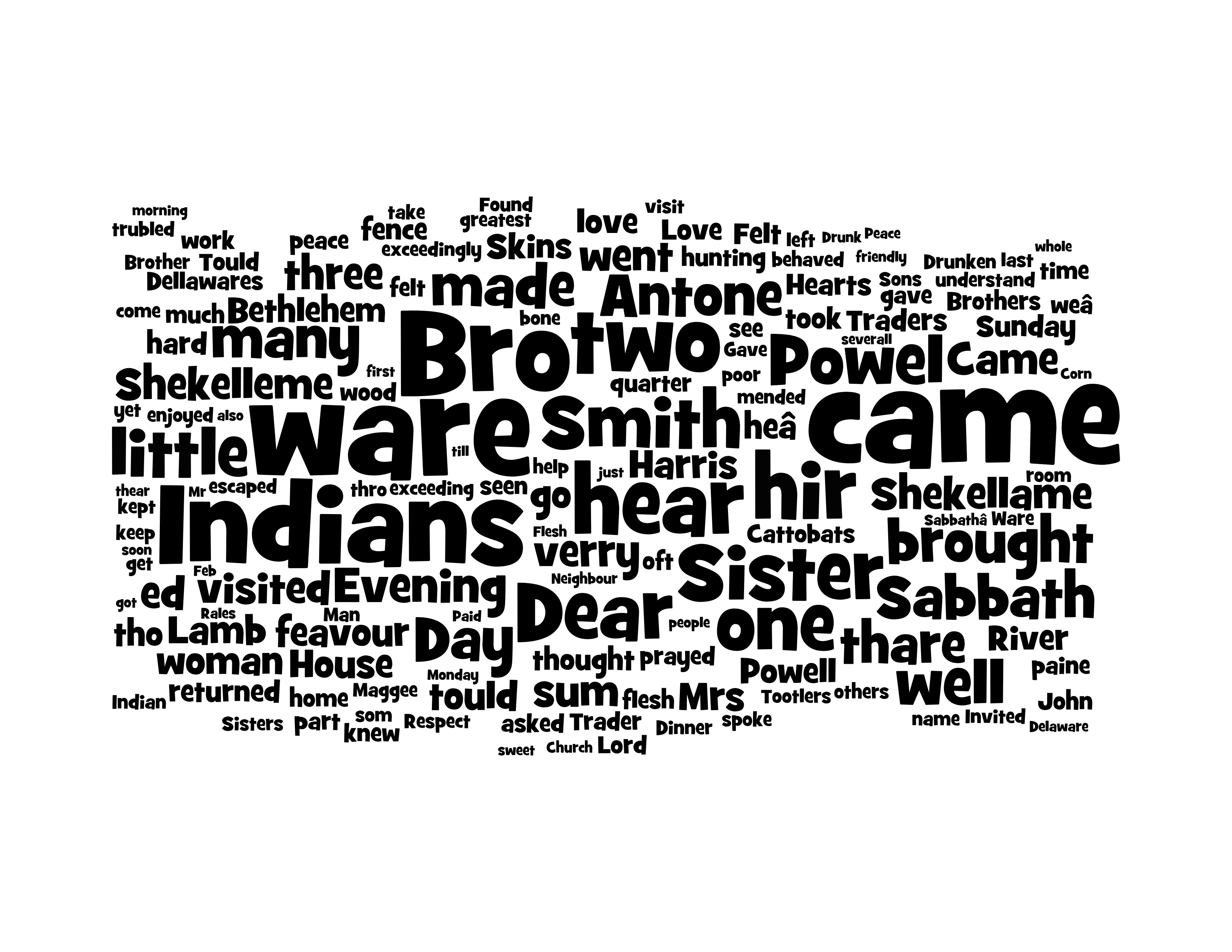The concept of distant reading is seen as the “improper way” to read a text, according to many scholars of literature. Essentially, distant ready is a way to encompass and learn from many texts without closely reading them. Of course there is the practical reason for distant reading; it takes considerably less time and can generate information that would be otherwise impossible to extract by close reading. But contrary to popular ideas, distant reading is not a means for the “answer”. It is in fact a way to spark inquiry, and as Whitely notes, distant reading and visualisation tools are a component in a larger interpretative process.
In the historical context of the Powell diary, we can use distant reading and visualization tools to generate illustrations that provide information that would otherwise be impossible to gather by close reading. In Figure 1, the Powell Diary is represented in a Wordle image representing the frequency of the word as dependent on the size. This method is relatively straight forward and is “nice to look at”.

Another visualisation tool, RezoViz is more complex than the representation in Figure 1. This word map illustrates the connections between names and places in the Powell Diary. Again, the achievement of this from close reading is a Whitley would say, making complex data sets more accessible than they might otherwise be.

The scatter plot in Figure 3 gives a different perspective on the Powell Diary in regards to word frequencies. ScatterPlot displays the correspondence of words in a corpus that relies on statistical analysis.

One could argue that some visualisation tools act to remove some of the bias that is experienced by close reading. And thus, But how does one actually regard written documents in history as “true”? Seeing as the substance in historical documents fascinates everyday people as well as literary scholars, it is important to extract as much relevant information as possible; distant reading and visualisation tools can aid in this process. More specifically, the Powell Diary was written as an account of events from the perspective of a Moravian missionary. In most cases, the author was involved in the events that were being described. As a result of this, there may have been considerable time between the event and the recording of it during which facts may be lost or unconsciously altered. As previously mentioned, there are particular biases present in the diary primarily due to cultural and religious differences. For example, a common word in the Wordle image is Sabbath. This has religious connotations since it denotes a religious day of rest. “Lamb” and “prayed” are also common words that have religious connotations.
Traditional literary scholars will argue against distant reading and its processes despite their ability to statistically dissect information. In the case of the Powell Diary, the varying tools enable us to create connections and gather information that would be more difficult to do via close reading. And like the Poetess Archive described by Whitley, distant reading can not only illustrate connections within a text, it can enable the comparison and connection with other relevant texts.